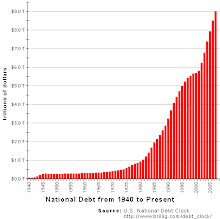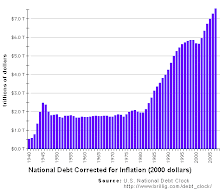Tuesday, December 2, 2008
Fiscal Policy - Learning Objectives
After studying the portion of this blog devoted to fiscal policy, you should be able to:
· define fiscal policy and explain its political bias.
· define and explain the difference between expansionary and contractionary fiscal policy.
· define tax efficiency and explain its relationship to tax equity.
· define and explain the difference between marginal and average tax rates.
· explain lump sum taxes and discuss their efficiency and equity.
· explain flat taxes and discuss their efficiency and equity.
· explain consumption taxes and discuss their efficiency and equity.
· explain income taxes and discuss their efficiency and equity.
· explain sales taxes and discuss their efficiency and equity.
· explain property taxes and discuss their efficiency and equity.
· explain estate taxes and discuss their efficiency and equity.
· explain excise taxes and discuss their efficiency and equity.
· explain the difference between vertical and horizontal equity.
· explain the benefits and the ability-to-pay principles.
· explain the difference between progressive, proportional, and regressive taxes.
· explain the relationship between budget surpluses, deficits, and the public debt.
· evaluate the current budget of the United States. Is there a better way to collect taxes? Is there a better way to spend tax revenue?
· discuss the possible implications the current budget has for the future.
· define fiscal policy and explain its political bias.
· define and explain the difference between expansionary and contractionary fiscal policy.
· define tax efficiency and explain its relationship to tax equity.
· define and explain the difference between marginal and average tax rates.
· explain lump sum taxes and discuss their efficiency and equity.
· explain flat taxes and discuss their efficiency and equity.
· explain consumption taxes and discuss their efficiency and equity.
· explain income taxes and discuss their efficiency and equity.
· explain sales taxes and discuss their efficiency and equity.
· explain property taxes and discuss their efficiency and equity.
· explain estate taxes and discuss their efficiency and equity.
· explain excise taxes and discuss their efficiency and equity.
· explain the difference between vertical and horizontal equity.
· explain the benefits and the ability-to-pay principles.
· explain the difference between progressive, proportional, and regressive taxes.
· explain the relationship between budget surpluses, deficits, and the public debt.
· evaluate the current budget of the United States. Is there a better way to collect taxes? Is there a better way to spend tax revenue?
· discuss the possible implications the current budget has for the future.
Subscribe to:
Post Comments (Atom)






No comments:
Post a Comment